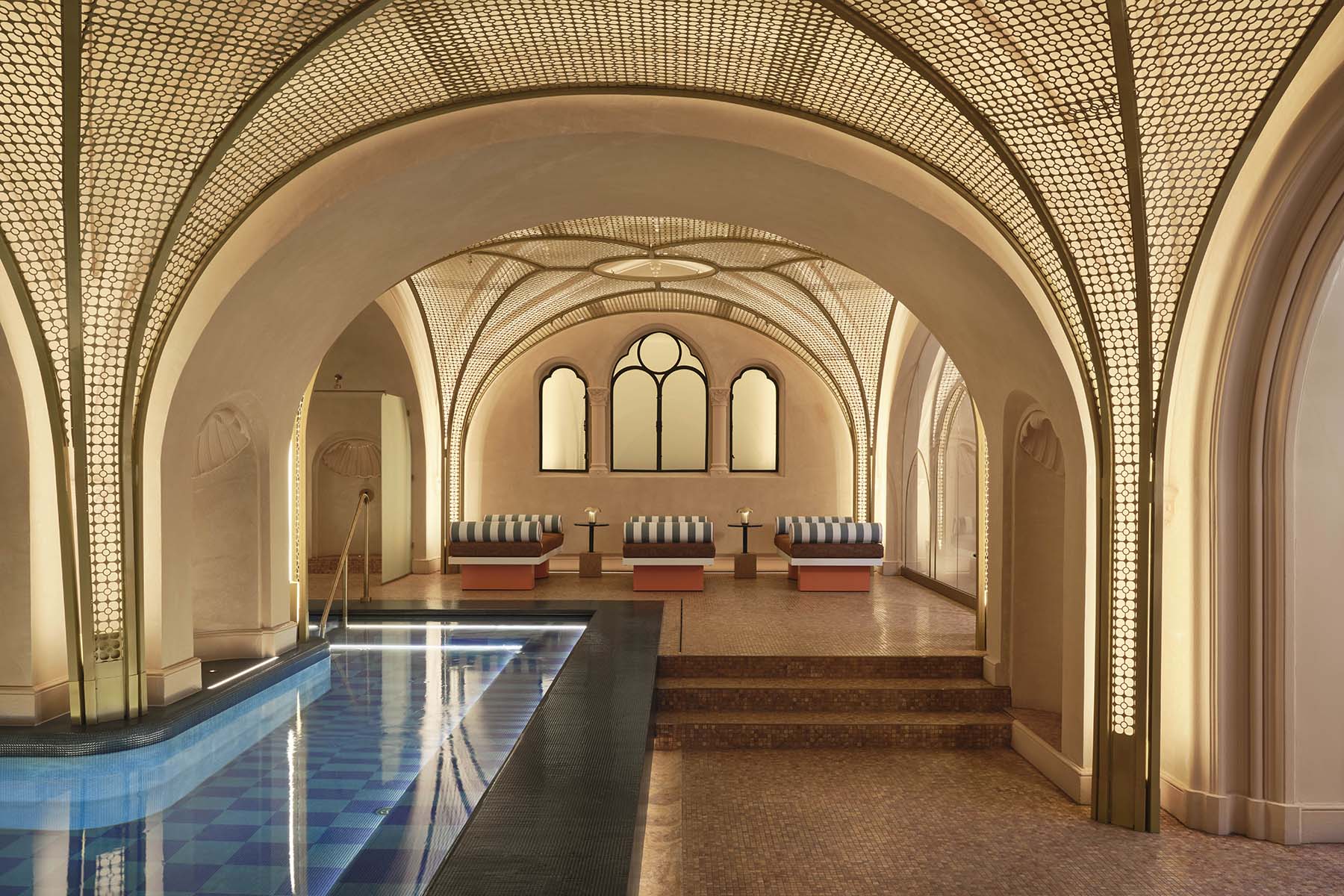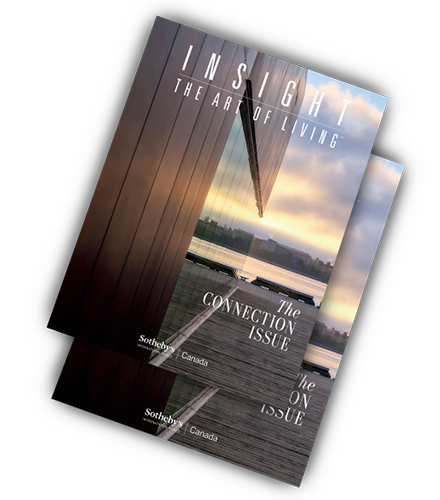The ornamental molding on the whitewashed façade of the neo-classical building on 3 Bem József tér in Budapest hints at its 19th-century roots. Although the structure sits in perfect harmony with its surroundings on this quiet street across the Danube — grandiose exteriors are standard in a city once known as the Paris of the East — its interior tells a much different story. Inside the Kimpton BEM Budapest (one of the city’s newest luxury hotels, housed in a former mansion), Dutch designer Marcel Wanders’ sophisticated interiors blend whimsical elements of Hungarian folklore with modern details. Think sleek egg-shaped desks and a vibrant colour palette of electric blues, emerald greens and rich reds. The hotel is but one example of Budapest’s growing appeal among travellers as the city transforms into a bustling hub of modern culture and cuisine at the heart of Europe.
“With its vibrant cultural scene, historic charm and emerging luxury market, Budapest has become a beacon for discerning investors and luxury travellers alike,” says Attila AE Domby, the hotel’s general manager, calling the Hungarian capital “the crown jewel of Central Europe, where timeless architecture meets modern luxury.”
Budapest is one of the Old Continent’s most exciting destinations, with its centuries- old cityscape of grand castles, palaces and UNESCO World Heritage sites coexisting alongside the modern identity of a city bursting with creative energy. Located along the banks of the Danube River, Hungary’s capital comprises two distinct parts: Buda and Pest. Buda is known for its hilly terrain and historical sights, including royal landmarks, while Pest is vibrant and lively with its hip ruin bars, Michelin-rated restaurants, luxury hotels and designer stores.

The Kimpton, meanwhile, joins a crowded hospitality scene, where world-class luxury brands such as the Four Seasons, Anantara and the Ritz-Carlton have been present for years, adding to the city’s appeal with jet- setters from around the globe.
Another recent addition is W Budapest, which opened its stylish doors in 2023 opposite the city’s stately opera house in the former Drechsler Palace on Andrássy Avenue, steps away from designer boutiques of brands like Gucci, Zegna, Max Mara, Moncler and Breitling. The 151-room hotel pampers its guests with an underground spa, sumptuous interiors inspired by the building’s ballet heritage and contemporary Asian flavours at Nightingale by Beefbar, its sleek Art Nouveau eatery.

Spa culture runs deep in Budapest, as its famous thermal baths have played a major role in the city’s history. In the early centuries, the Romans were the first to discover the healing powers of the area’s hot springs, even calling it “Aquincum” after the Latin word for water. Then, the Ottomans, renowned for their love of public baths, developed hammam-style baths in the 16th and 17th centuries. The city’s reputation as Europe’s spa hub was cemented by elaborate Art Nouveau and Neo-classical bathhouses built in the 19th century as Budapest served as the second capital of the Austro-Hungarian Empire.
For a modern-day take on Budapest’s wellness culture, visit the upscale Budapest Institute’s Omorovicza Boutique & Spa. The skincare brand, founded in 2006 and adored by celebrities like Anne Hathaway and Kate Hudson, draws on the healing powers of mineral-rich Hungarian thermal waters and mud. Its flagship institute has an intimate spa hidden in the back (the front serves as a store and a check-in area) with a relaxing lounge clad in a palette of neutrals and soft terracotta hues that feels like a wellness cocoon amidst the bustle of one of Budapest’s busiest thoroughfares.
For a deeper understanding of Budapest’s cosmopolitan spirit, consider staying at a boutique hotel like Hotel Rum. Nestled on a quiet street steps away from Egyetem Square (University Square), this six-storey neoclassical building was designed by the same architect who completed the Hungarian Parliament Building. It houses 40 guest rooms with contemporary furnishings, giving off a modern urban vibe dreamed up by a team of local designers. The rooftop bar is a popular hangout spot for cocktail lovers and rewards patrons with panoramic city views. And while the rooftop delivers a visual treat, the ground floor restaurant will delight your taste buds. Salt, a cozy space with only a handful of tables, whitewashed walls and arched ceilings, made its debut into the world of Michelin- starred restaurants in 2021, the same year the prestigious guide launched its inaugural edition in Hungary. Since then, Salt’s “intricate, exquisitely constructed dishes,” as the Michelin guide describes them, have gained the restaurant numerous awards, including for best chef. Szilárd Tóth, the mastermind behind Salt’s 14-course tasting menu, incorporates herbs and plants that Tóth often forages himself, paying tribute to Hungary’s culinary traditions with a special focus on sustainability (the restaurant was awarded a Michelin Green Star).
But Salt is just one piece of Budapest’s culinary puzzle. The city’s dining scene is undergoing a veritable renaissance, with young chefs experimenting with traditional recipes and flavours and adapting them to modern palates.

Tucked in a modern residential building, Stand, another Michelin-approved establishment, elevates Hungarian gastronomy, demonstrating its versatility. If you’re going to try the country’s most famous dish, Gulyás soup — tender chunks of beef in a hearty paprika-infused broth — then have it at a two-star Michelin restaurant that doesn’t compromise with fresh ingredients and authentic flavours.
But great meals don’t necessarily require a Michelin star in Budapest. In Hoppá! Bistro, on the lively October Street downtown, 30-year-old chef Márton Irtó puts on a gastronomic show appreciated by tourists and locals alike. If you’re on a quest to discover Hungarian cuisine, then an order of chicken paprikash is a must. However, the foie gras served with challah, and the duck breast with shiitake mushrooms and plum are an excellent indulgence, too. The restaurant is a few blocks from the Danube, so you can walk off the meal along the scenic river promenade. And speaking of one of the city’s most prominent natural landmarks, Felix Kitchen & Bar on the Buda side of the city, has front-row vistas of the river, best enjoyed with a glass of rare Hungarian red from the restaurant’s expertly curated wine list by Tamás Czinki, the country’s first master sommelier.
Budapest’s transformation as a creative haven for artists has also left its mark on the city’s landscape. Galleries and multidisciplinary art spaces catering to up-and-coming creatives are popping up across the city, drawing local and international talent. There’s a sense of camaraderie among Budapest-based artists, explains Márton Nemes, one of the leading contemporary voices in the city. Nemes, who represented Hungary at the Venice Biennale this year and recently launched his own collaborative art studio in Budapest, says that many artists use these spaces to meet and discuss their artistic ideas.
“Every Hungarian artist is unique, drawing up a new type of narrative,” Nemes adds, noting that artists here are forging their path without emulating established trends. His vibrant abstract works often make cameos in some of the city’s most buzzed-about galleries and museums, like acb Gallery and Ludwig Museum of Contemporary Art.
Art enthusiasts should also put Einspach & Czapolai Fine Art on their Budapest list. This relative newcomer, founded in 2021, occupies a brightly lit space on the ground floor of a historic palace, focuses on post- war modernism and represents up-and- coming and established Hungarian talents.
One thing is evident. As Nemes points out, in Budapest the distance between the audience and the artists is getting shorter and shorter. As the city continues to reinvent itself, it shows that it has so much more to offer than just romantic architecture and quaint coffee shops. And there’s no doubt that Hungary’s capital will continue to capture hearts and minds for years to come.
By Dobrina Zhekova — *This article originally appeared in Insight: The Art Of Living Magazine – The Connection Issue.



